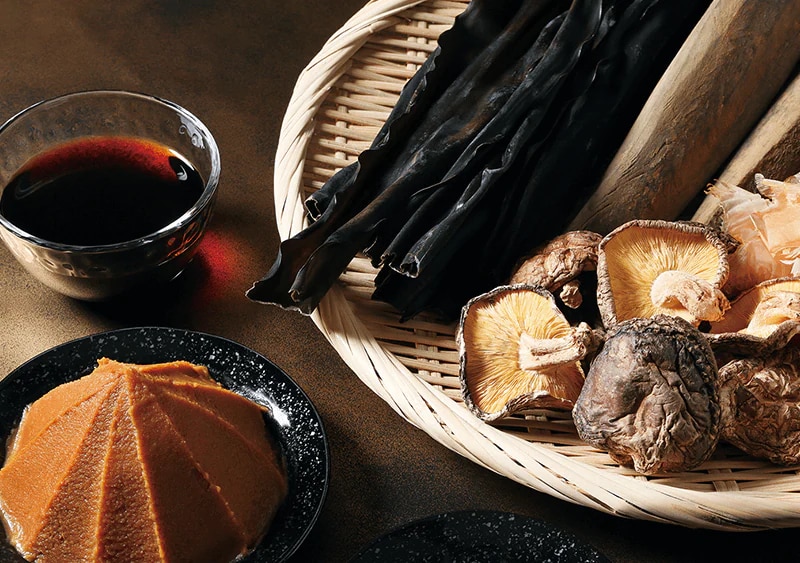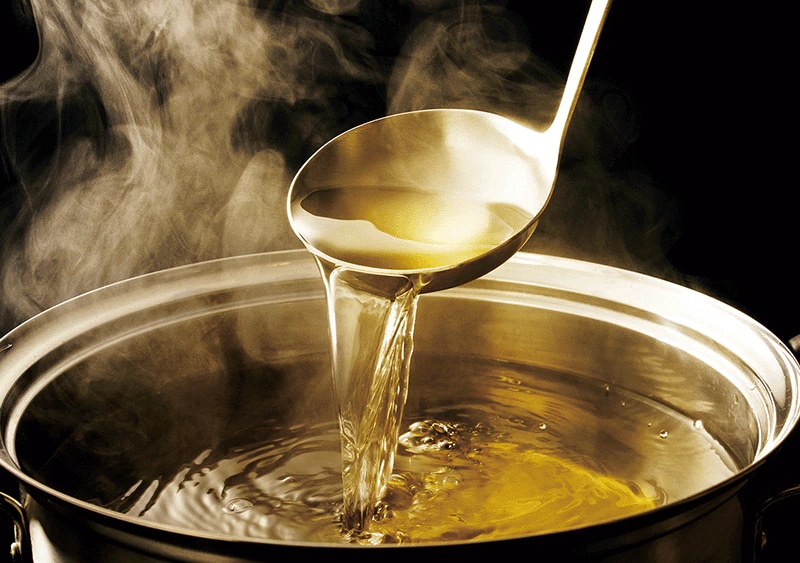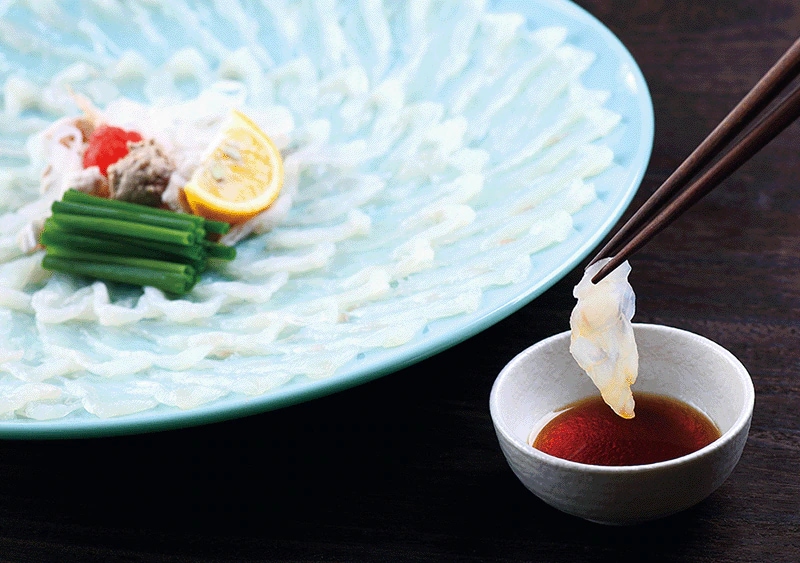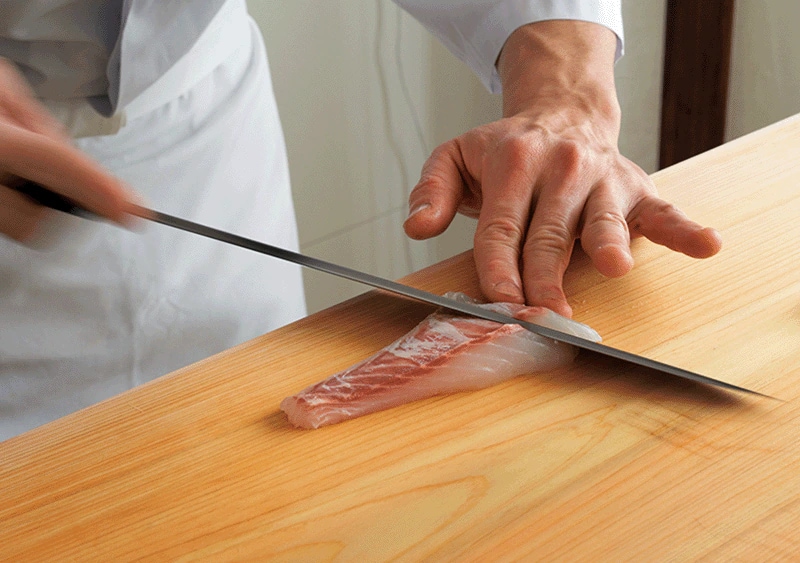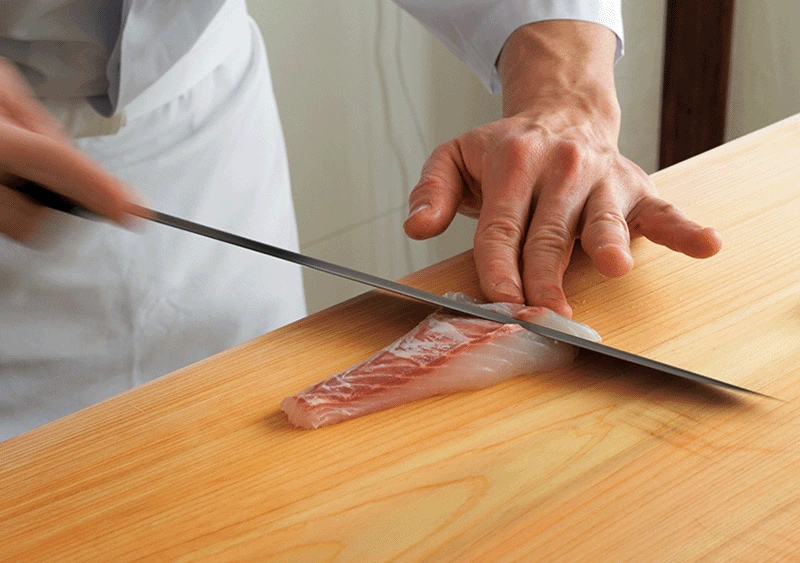
Visual Appeal
The subtle character and tastes of Japanese dishes are informed by sensory experiences. Following on smell, flavor and texture, our series concludes with a look at how culinary visual appeal is also integral to Japanese cuisine.
Japanese cuisine is often described as a feast for the eyes. The beauty of color variation and food presentation, the expression of seasonality through the colors and flavors of fresh seasonal ingredients, the allure of the vessels upon which the food is arranged—all these elements create a delightful experience for the eye as well as for the palate.
The hassun
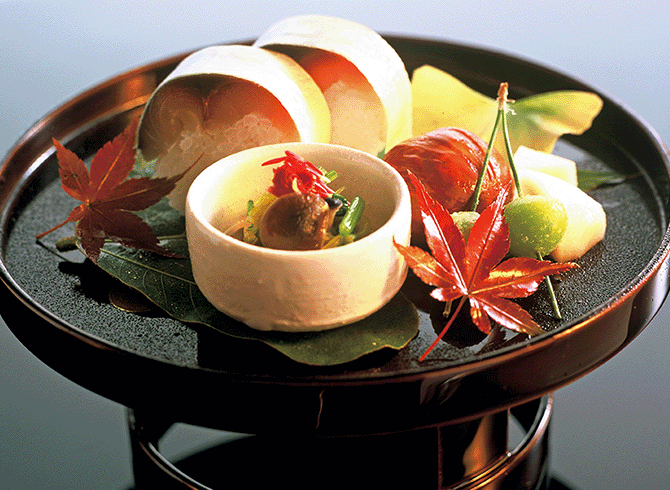
Courtesy of Kinobu
Among the courses in the basic menu of a meal served at ryotei, refined and exclusive Japanese-style restaurants, the most visually striking is a dish called hassun. The sun is an old Japanese measuring unit equivalent to 3 centimeters; hassun translates literally as “eight sun,” or about 24 centimeters (9.4 inches). The hassun comprises small assorted delicacies served upon a flat 24-centimeter tray, served with drinks or as an appetizer. Its artful arrangement of foods “from sea and land” represents the beauty of nature and its changing seasons—the essence of culinary appeal.
Chef Takuji Takahashi, third-generation master chef and owner of the renowned Kyoto ryotei Kinobu, explains that there are rules for the arrangement of food in a hassun dish. A pair of bamboo chopsticks is positioned in front of the tray, while bite-sized seafood delicacies and tidbits from the forest and mountain are placed on the upper right or lower left of the tray. Together, this arrangement generates a pure, tranquil feel to the platter as a whole. The ingredients used are those that are at their very best in the season, or those that are carefully chosen to symbolize an annual event in the traditional calendar, all presented so as to make the meal an unforgettable experience.
A harmony of colors
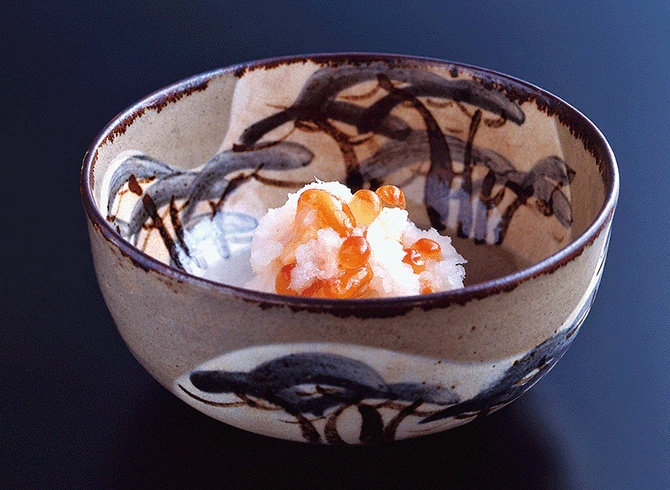
Photographer: Gozen Koshida Courtesy of MIHO MUSEUM
Japanese cuisine has emphasized visual appeal from antiquity. Artistry was particularly required with regard to color, cutting technique and serving arrangements.*1 Japanese cuisine traditionally revolves around five colors, namely black, green, red, yellow and white. A variety of ingredients are used to express these colors; representative ingredients for black include black sesame, nori seaweed and squid ink; seasonal vegetables embody green; red is suggested by salmon, umeboshi pickled apricots and red turnip; yellow is invoked by egg yolk, kabocha squash and satsuma (mikan); and white is depicted through rice, tofu and daikon.
This concept of the five colors is thought to be associated with the ancient Taoist worldview of harmony, and in Japanese cuisine, the colors are presented in a balanced way to signify a healthy meal. The vessels upon which food is served are considered embellishment—important elements that harmonize and complement the food itself, to the greater delight of the eyes.
Technique and arrangement
One unique feature of Japanese cuisine is the emphasis placed on cutting techniques, which determine the appeal of a dish. This is particularly apparent in the preparation of fish for sashimi, considered the pinnacle of the cuisine, and allocated high status among menu items. Appearance is a significant component of sashimi: slicing is the only form of preparation involved and a selection of the best-quality fish that is fresh and fatty with good color is required. Sashimi is sliced into bite-sized pieces with a single stroke using a special long, thin-bladed knife. A chef can devote a lifetime to attain the ideal beauty of the cut surface and shape of each sashimi slice. A platter of sashimi is called otsukuri (“something that is built”), a term that suggests a three-dimensional form; indeed, arrangements of Japanese food on serving ware are characteristically three-dimensional.
Arrangement style in food presentation is another distinctive aspect of Japanese cuisine. Traditional arrangements do not emphasize volume, and never allow food to overflow the vessel. Presentation is often enhanced by leaving some modest void on the plate—expressing the Japanese aesthetic that cherishes the beauty of empty space—rather than focusing on the luxury or extravagance of the food.
Visual sensibility
It is not easy to explain where and how this aesthetic originated and came to be nurtured, but according to Japanese historian and academic Isao Kumakura, its traces can be found in various expressions of art and culture throughout history.*2 For example, a traditional aesthetic concept called yugen, used to describe a “subtle profundity,” was expressed in the performance of Noh drama in the fifteenth century. Another aesthetic notion, often conveyed in the sixteenth century, is wabi-sabi, the “sense of fulfillment found in solitude and loneliness felt after passing through the best days of life.” This philosophical concept is most deeply rooted and imparted through the Japanese tea ceremony (chanoyu). And the elegant paintings of the Rimpa School, prominent during the seventeenth century, realize the beauty of empty space, together with a highly decorative design sensibility. All of these aesthetic threads have influenced the visual aspects of Japanese cuisine at contemporary ryotei restaurants, and are also reflected in home cooking today.
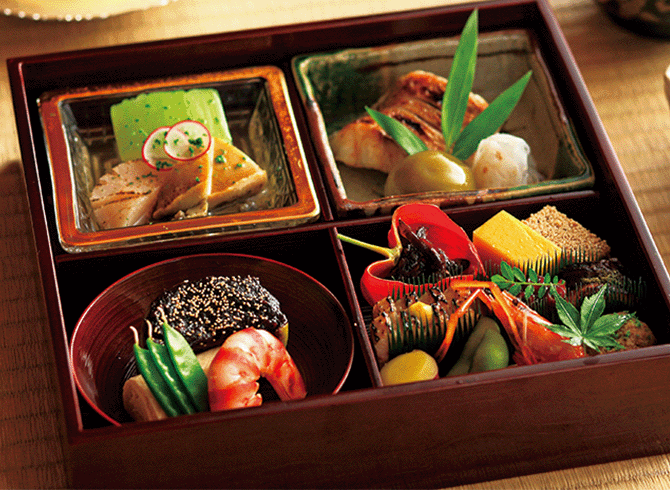
Courtesy of Kinobu
Emphasis on the beauty of presentation is not limited to the dining experience at the table. Some examples can be seen in the ingenious and creative food arrangements of Japanese bento lunch boxes, including makunouchi (lit., “between curtains”) bento traditionally sold and eaten during theater intermission; ekiben (“station bento”) enjoyed on trains; and shokado bento, wherein the bento box is divided into four compartments, each of which symbolizes the individual vessels that comprise a gourmet ryotei meal. These small works of visual art in an ordinary lunch box convey to us the distilled essence of Japanese cuisine.
- *1Hiromi Akahori, “Kaiseki Ryori no Miryoku,” (Appeal of kaiseki cuisine), vesta, no. 89 (Winter 2013): 30.
- *2Isao Kumakura, “Artistic Awareness,” in Introduction to Japanese Cuisine: Nature, History and Culture, in the series “The Japanese Culinary Academy’s Complete Japanese Cuisine” (Tokyo, Shuhari Initiative Ltd., 2015): 84.

